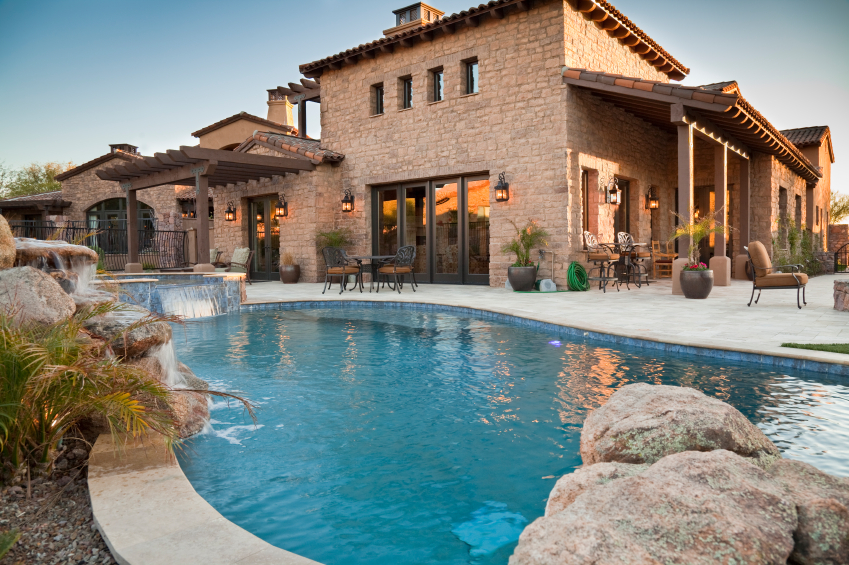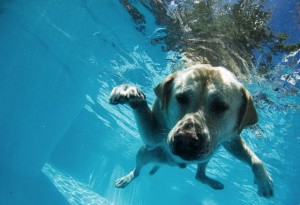
Salt Water Pools
 Increasingly popular today, Salt Water Pools offer water that is silkier, less drying to the skin and less irritating to the eyes. Also, they provide chlorine on a constant basis, which helps to keep your pool water sanitized and prevent algae.
Increasingly popular today, Salt Water Pools offer water that is silkier, less drying to the skin and less irritating to the eyes. Also, they provide chlorine on a constant basis, which helps to keep your pool water sanitized and prevent algae.
There are, however, common misconceptions about alternatives to chlorinated pools. Many are turning to salt water pools in a belief that it will be less expensive and lower maintenance. These assumptions are totally false.
If it is sodium hypochlorite pool you desire, you can save money, many headaches, and a great deal of time by just using bleach. Bleach is usually 6% sodium hypochlorite.Salt water chlorinators, also known as salt water generators (SWG) works by using electrolysis to release chlorine gas from the salt in your pool water. Two to five hundred pounds of salt is added to the pool water to achieve a saturation of approximately 3200 parts per million.
The salt water is then passed though a chlorinator cell that is electronically charged and this process releases chlorine gas from the salt. The chlorine gas then combines with the pool water to create liquid sodium hypochlorite chlorine (more technical hypochlorous acid and hypochlorite ions). A saltwater pool is a sodium hypochlorite chlorine pool rather than calcium hypochlorite pool. The difference is that you make the chlorine yourself.
If you are considering such a salt water chlorinator, there are a few things you will want to be aware of before you buy. Many pool stores and builders tend to only mention the pros of these units. You should know what common problems usually arise and the reason for them so you can avoid unnecessary disappointment with this new investment.
This list will help you recognize some of the most common problems with salt water chlorinators:
1. Corrosion
2. Degrading of coping and decking
3. Salinity killing grass, plants, and flowers (and pets?)
4. Balancing the Water chemistry
Corrosion
For those that are fortunate enough to live on the coast have unfortunately also witnessed what salty air can do to window screens, sliding doors, and furniture. The same hold true when you have a salt water pool in your back yard. Anything that is metal is susceptible to this type of carrion atmospheric corrosion. This would include chain link fences, wrought iron gates, furniture, doors, screen, sheds, and even lawn equipment stored close by.
Salt spray and airborne saltwater droplets introduce chloride ions (which does come from the salt in the pool) to metal surfaces with a corresponding deleterious effect on the metal. The presence of moisture is an absolute necessity for most corrosion processes and when combined with elevated temperatures and salt or pollutants further enhances the atmospheric corrosion process.
Atmospheric corrosion is everywhere and is responsible for more metal damage than any other form of environmental corrosion. But this type of corrosion is exponentially elevated when a salt water pool is in one’s backyard. Since these chloride ions can carry up to 7 miles, one could be putting their immediate neighbors at risk as well.
Degrading of Coping, Decking, and Equipment
The salt itself from a salt water pool has issues of attacking the cement in the plaster and deck materials. This is a relatively slow process as the salt levels are low. If the sodium hypochlorite levels are too high, the main problem can be the corrosion by the chlorine being produced by the electrolytic cell. Chlorine can bleach the reagents, giving you a “false negative”, and people can grossly over-chlorinate their pool damaging equipment, the pool surface, lighting fixtures, and ladders.
A common problem is corrosion at the ladder. The deck anchors are usually cast aluminum and the ladder is usually stainless steel. These dissimilar metals with the addition of the electrolytes in the water create galvanic plating or corrosion. The saltwater will corroded the anchors overtime.
Everyone should be aware that if you have salt water (in the 2800 ppm or more range), you should be prepared to seal your coping, especially if it is porous like limestone. Otherwise, the salt will dry and start to etch into your coping. Besides sealing the stone, it is also advisable and an added precaution to hose down the coping at the end of any swim day with fresh water. Although the salt-water in the pool is not corrosive at levels of up t0 3000-3500 ppm, when that water hits the coping and evaporates, it leaves pure salt behind. The pure salt is corrosive and is probably the cause of the corroding coping.
Some pool builders are now refusing to build any salt water pools with cream limestone or taupe coping. Any customer that wants either coping for a SWG pool must usually sign a release form. Pool builders have said that they have had to replace a significant amount of both these types of coping over the years.
Salinity killing grass, plants, flowers, (and pets?)
Most of the grass, trees, shrubs, and flowers do not grow well with high salinity water. In fact, it can easily kill them. The issue with grass being killed around salt water pools is very common. When a heavy rain occurs, the elevated water level will seep underneath the coping and run into the yard. This water will contact a very high amount of both sodium and chloride and can kill grass. The same scenario would affect planters located around the pool. This can be very unsightly, much less costly, to the homeowner.
Salt water will be harmful for pets to drink. In fact, it can lead to dehydration and serious health problems.
Problems maintaining a balanced water chemistry
• Many complain about the inability of reaching the desired chlorine level. This may be caused from the pool pump/filter not running long enough for the unit to create the needed amount of chorine. The factors that increase chlorine demand are: heavy bathing load, sunshine, hot weather, and low stabilizer level.
• If the salt level is too low, then the unit will not produce enough chlorine.
• If the stabilizer (Cyanuric Acid) level is too low, the chlorine will not stay in the pool water long and the unit will not be able to keep up with demand. This is very common. Many problems occur when the stabilizer (Cyanuric Acid) levels are too low. 80ppm is recommended by most manufacturers. In humid climates, as much as 120m ppm may be necessary to keep the chlorine in the pool. If stabilizer levels are too low the chorine produced will be burned off by the sun. Conditioner acts as sunscreen for your chlorine. You may damage the pool’s interior surface with high levels of Cyanuric Acid. High levels of stabilizer will also cause your skin to itch.
• If salt level is too high, the cell might be failing and thus giving a faulty salt reading. The cell may indicate to add salt. If this is done without double checking the true reading, you can over-salt the water. Most systems will not work if the salinity of the water is too high or too low.
• If phosphates are present in the water (stain removal products on the market are loaded with phosphates), they are food for algae. Some may disagree about these products and say they have no effect. We have seen this on a regular basis and have the water analyses that tell otherwise. If phosphate levels are too high, your salt water chlorinator will act as though it is not creating chlorine. When the chlorinator creates the chlorine, it immediately has to fight off the algae that is growing, even when it not visible. When this happens, your pool cannot catch up and build a reserve of chlorine in the water. (1-3ppm)